

Where are we? Somewhere in Eastern Ukraine, July 18, 2014—the day after Malaysia Airlines Flight 17 was shot down, killing all 238 passengers as well as the fifteen crew members on board. Later, Russian media would suggest that the shooting was an attempt to assassinate Vladimir Putin; that it was shot down by Ukrainians by mistake; that Ukrainian air traffic controllers had intentionally misdirected the plane over a war zone; that it was an attempt to smear the pro-Russian rebels in Ukraine. Other stories spread: the plane was filled with 100 AIDS researchers or already-dead bodies and explosives. Eventually, the news cycle moved on.
But, right now, it’s July 18 and we’re in a forest illuminated by the yellow of car headlights. Two men communicate in Russian over the phone. “Where is that motherfucker?” “What was going on yesterday?” A man is said to have received phone calls from strange numbers. A car cannot be found. It is in Russia. But last night, he had said he didn’t know where it was. Truth bleeds out; the camera is unsteady. Uncertainty permeates.
I used to think propaganda was about persuading people
“I used to think propaganda was about persuading people,” the journalist and writer Peter Pomerantsev states a few scenes later. “Now it doesn’t seem to be about that. It’s just about deconstructing the other sides, disrupting.” So begins The Sprawl: Propaganda about Propaganda, the designer and artist collective Metahaven’s 2016 film that contends with this new landscape of propaganda. At the same time, as the title explains, this is itself propaganda, made in 2016—a deconstruction as well as a disruption.
Here, archival footage (for example, of Ronald Reagan, described in the subtitle as an actor) is spliced with original footage (for example, a woman wielding a Katana sword). In other words, the poetic pervades the analytic, and the film, like its subject matter, escapes precise categorization. Following the scene in the forest, a shot of the moon contrasts with the artificial light from the car. A woman’s voice intones the second part of the Requiem, Anna Akhmatova’s epic poem depicting the suffering of the Russian people under Stalin. The film recalls the strategies of the Neue Sachlichkeit (New Objectivity) movement of Weimar Germany—the uncanniness of the contemporary is brought into sharp focus by the intrusion of the surreal.
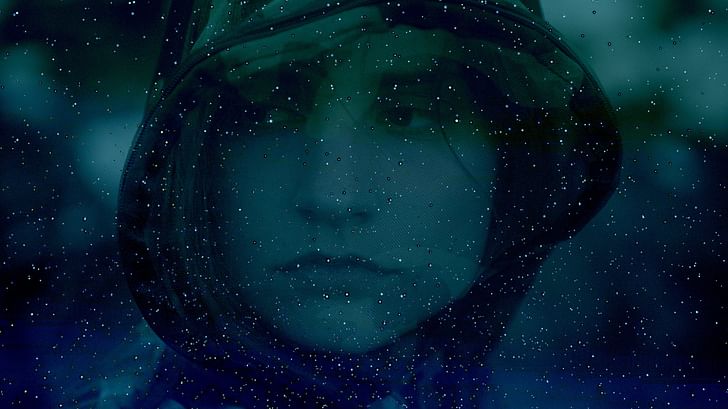
That is to say, like with their other work, The Sprawl: Propaganda about Propaganda doesn’t re-present its subject matter with an imposed sense of clarity. Rather, it assumes its form; it intervenes in the very reality it depicts. From 2010 until 2013, Metahaven designed a line of scarves and t-shirts sold to support the whistleblowing site WikiLeaks. Later, in their book Black Transparency: The Right to Know in the Age of Transparency (2015), which was accompanied by an exhibition at Bureau Europa in Maastricht and Future Gallery in Berlin, they delved deep—and critically—into the various forms of information leaks and dumps that have so radically marked the last two decades.
Roughly nine months ago, I began a conversation with Daniel Van der Velden and Vinca Kruk, founders of Metahaven. We discussed The Sprawl: Propaganda about Propaganda, which had just been released and also exists in an online version, as well as Black Transparency: The Right to Know in the Age of Transparency. We talked about the spatial aspects of their research, the invocation of architecture in their writing, and their perceptions of the technological and geopolitical changes underfoot today. We resumed our conversation in December to discuss their most recent film—a work of fiction—Information Skies.
This interview has been edited and rearranged for length and clarity.
In the introduction to your book Black Transparency: The Right to Know in the Age of Mass Surveillance, you write, “This book is a tribute to the broken glass of the transparency movement.” Was there a particular moment or event that changed your perception of the ‘transparency movement’ and instigated the thoughts behind this book?
At a time when a documentary about Edward Snowden deservedly wins an Oscar, and the most vocal advocates of full exposure of the military-industrial complex have themselves become media celebrities, it seems important to remember where this all began. It began at a time when transparency had no marketing department. The shattering of the movement is about the rift, the disparity, between those who took part, and those who were seen.
In the book you analyze Le Corbusier’s League of Nations building in relationship to the spatial order of the League of Nations. In one of the maps included in the book, other major moments in modern architecture’s affair with transparency surface: the Farnsworth House, the Glass Pavilion, the Glass House, the Pompidou. It seems these are not mere metaphors for transparency in your writing. What role did these architectural objects play in your conceptualization of this project?
You are forgetting Blondie’s Heart of Glass! And, of course, WikiLeaks. The whole point of a transparency timeline is that all kinds of different things can be in it, from politics, to software, to pop music. Maybe there were two major moments for transparency: one where glass became applicable as a building material, which first precipitated, and then coincided with political beliefs in a world without secrets.
And then, a next major moment is the discovery of transparency as a concept, as a metaphor for openness. As a metaphorical quality of organization, something Colin Rowe and Robert Slutzky had hinted at with the greatest possible caution when they discussed the Le Corbusier plan for a League of Nations campus in Geneva. They were unable or unwilling to develop this notion further even though the League of Nations itself, as an organization, would have been a perfect starting point. Ultimately it was software—not hardware—that made this happen. It was not until the geopolitical architectures of mass leaking had been tested and completed that the dream of a world without secrets really came about.

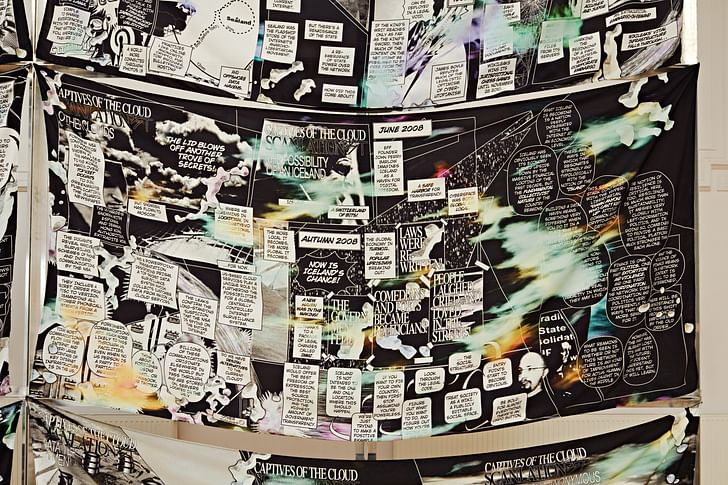
Black Transparency expands and complicates discussions of transparency in relation to governance, which are often reduced to quantifying the amount of info made available by the state. Method, you write, is of “decisive importance to transparency’s political impact.” I was wondering if you would give a few examples of these different methods, ‘black’ and otherwise, and what they imply about orienting politics towards a horizon of 'full transparency'?
No one knows what a horizon of full transparency looks like, and if it’s even desirable. It’s surely hard to get there, because the horizon always shifts. Any decision to attain a fully transparent political future will be one that is taken opaquely, and not by everyone.
Black transparency is about anonymously releasing secret information with the intent of triggering political shockwaves. In experimental network science, an event like that is called an information cascade. People begin to act on new knowledge as they see others doing the same. Information cascades are real, but ideas around them have taken on an ideological spin. The fall of Communism in Europe has been explained as an information cascade, where large amounts of people suddenly ‘knew’ that the Communist regime was hollow and dead, and acted on this information. Clay Shirky—one of the cascade’s chief ideologists—said about citizen protests in the German Democratic Republic: “Finally the people in Leipzig could see others acting on the knowledge that the GDR was rotten. This shared awareness is the step necessary for real public action.”
The story of the end of communism is a familiar tale, of people seeing a more advantageous option before them, and collectively cascading in that direction. It has become a model for the way in which, in the liberal West, the idea of a logical progression of societies, from oppression toward the democracy-capitalism matrix, has become naturalized. The information cascade, in its political version, is compliant with this idea of natural progress since the cascade itself is described as a phenomenon of natural science. The cascade is the informational version of an avalanche. It tends to get seen as a phenomenon of nature, not of politics.Any decision to attain a fully transparent political future will be one that is taken opaquely, and not by everyone.
WikiLeaks’ revelations, especially in the early years, spearheaded this logic, using information to trigger systemic change charged by the progressive, yet also evasive, qualities of the web. Initially WikiLeaks pledged to expose China, Russia, and Central Asian regimes. It went on to do something else, and quite something more than that. But there was no control over the outcomes of these disruptive cascades. In the aftermath of the Arab Spring this became all too visible. In Libya, the process was aided by a disastrous Western military intervention.
In our documentary The Sprawl (Propaganda About Propaganda), we present the Russian government’s counternarrative to the information cascade, which claims that all the so-called “color revolutions” and other events of the 2000s and 2010s were controlled by Western actors. The West itself, conversely, believes that such changes are transitions that happen spontaneously; for sure that is also an obfuscation of its own ideological role and geopolitical objectives. So there is a counter-cascade. Whereas one side believes that all change is spontaneous and natural, the other believes that it can only be the outcome of an explicitly hierarchical order. Our take on color revolutions once was that “in the post-political context, revolution lost the aesthetic components that it still possessed during the Cold War. The dissolution of the Left, and the de-politicization of human rights, have created not just a political but also an aesthetic vacuum, in which the ‘color revolutions’ appear, a Pantone swatchbook of pastel hues where the most overtly revolutionary color of the 20th century, red, is categorically avoided… The Dalai Lamafication of the revolutionary aesthetic has brought about its identification with earthy and flowery tints, fabrics, and plants. While each individual uprising is based in a local context, there undoubtedly is a pattern to the color revolutions. Add to this the identification of revolution with information technology, first diagnosed by the West in its take on Ukraine’s 2004 Orange Revolution, and culminating in Iran’s 2009 Green Revolution, with Twitter’s famous postponement of its server maintenance on request of the US State Department.”
On the one hand, Black Transparency sketches an image of the contemporary moment as marked by profound revisions to the Westphalian order; on the other, it reveals how state power is being buttressed and strengthened to new degrees. I’m interested in how you see the narrative of WikiLeaks and Assange as illustrating this paradoxical weakening and strengthening of state sovereignty?
Before Assange’s continued confinement in the UK, or more precisely, in the one piece of UK territory that’s Ecuadorian, WikiLeaks surfed the grid of nation-states in a manner similar to OMA/Rem Koolhaas surfing the waves of globalization. In Koolhaas’ case, this was about public-private capital offering endless inroads into scripting cities, fashions, buildings, regions, polities, perceptions and behaviors. In WikiLeaks’ case, this was about using the infrastructure of a globalized internet to disrupt state control, an idea that wasn’t itself new at all, but was never before put to such directly political use.
WikiLeaks’ hosting model was about their releases being redundantly accessible, from servers in different jurisdictions, each of them operating under laws or local practices prone to resisting takedowns. With its distributed hosting model, WikiLeaks was completely resilient in regards to the powers of any particular country or agent to take information offline; its opponents had no power over it at all and couldn’t pin down WikiLeaks as an organization either. It had no address. WikiLeaks was the free player surfing the nation-state grid, itself bound to no particular sovereign space. It then began to publish sensitive information about governments in the West, and became more symmetrical in its confrontation with familiar faces, such as then-US Secretary of State Hillary Clinton. Western governments would not seek injunctions, but resort to stealthier, trickier forms of coercive power, using exactly the secretive, grey areas of governance that had supposedly been overcome by modern democracy. The key here is not so much a resurgence of state power in general, but the resurgence of the extralegal and the extrajudicial, as Yochai Benkler has convincingly illuminated in his work around the financial embargo imposed on WikiLeaks by financial companies including PayPal, MasterCard, and Visa. WikiLeaks surfed the grid of nation-states in a manner similar to OMA/Rem Koolhaas surfing the waves of globalizationThe question though is whether WikiLeaks’ emphasis on the formal framework of legality, and its repeated unmasking of the modern democratic state’s flawed pretenses to transparency, has not at the same time endorsed, or naturalized, an older notion of ‘regime’, where almost none of the liberal pretenses of modern governance are even a thing to discuss, and where authoritarianism isn’t even a public secret, as much as an open fact.
When people upload things to ‘the Cloud’, they tend not to think of it as a material action. But in Black Transparency, you describe the Cloud as a megastructure. Rather than being immaterial, it “presupposes a piece of land where data centers can be built.” Could you talk about your interest in the spatial aspects of the Cloud?
We started working on “Captives of the Cloud” in 2011 and 2012, when it became obvious that there was some kind of disruption happening because of the material dislocation of data hosting from the places that the data comes from, or applies to. We were particularly intrigued with ways in which the United States constructed instances of ‘superjurisdiction’ based on its by-default dominance in domain name registry and cloud hosting. These takedowns and persecutions have done something else in parallel. They have transformed entities like Megaupload, and people such as its founder, Kim Dotcom, into overnight anarcho-libertarian celebrities. They have given ‘the Internet’ a more strongly political edge, adding to the fiction of its narrative. In 2012, we worked with Smári McCarthy of the Icelanic Modern Media Inititiative—who is now an MP for the Pirate Party—on a campaign that promoted data hosting in Iceland. The campaign—“Come to Iceland. Bring Data”—was never realized. But alternatives for US-based cloud hosting are more urgent than ever.
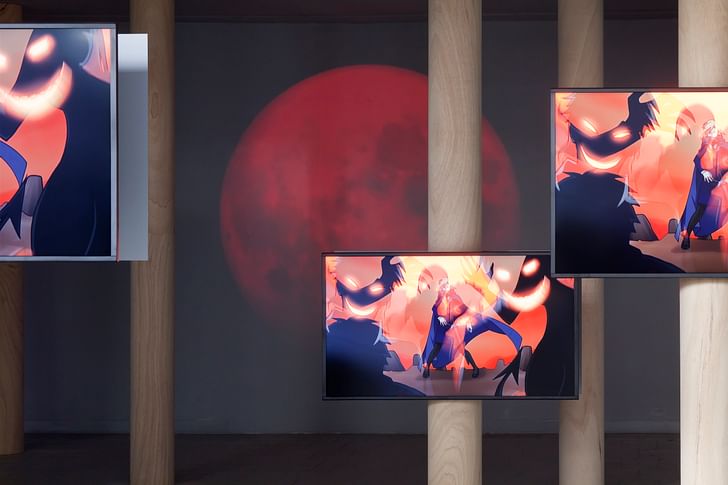

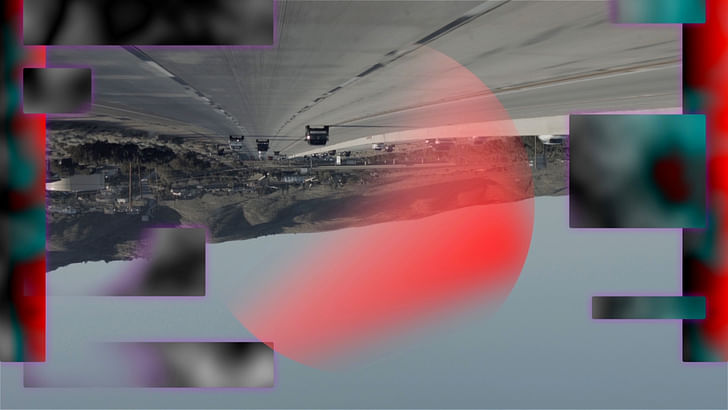
With your film The Sprawl (Propaganda about Propaganda) you depict a world marked by the proliferation of multiple, even contradictory, truths. Now, over a year after it was released, this is a major part of public discourse—so-called ‘fake news’ and its implications in the election of Donald Trump. Rather than something accidental, this ‘post-truth’ era is a strategic move by people like Vladislav Surkov in Russia, right? It’s a design, in a sense.
We never took propaganda to consist only of its factual or post-factual components, but explicitly wanted to address texture, surface, cracks in the surface, and cinematic aura. We also felt that it would be too limiting to identify propaganda only by the intent of its individual ‘architects’. It would make sense to look at the infrastructure of propaganda, which has dramatically changed since the separate media regimes of print, radio, cinema, and television converged onto the internet and the world wide web.
Should we consider the media landscape purely on terms of its output being fake or real? Far before the advent of ‘post-fact’ and ‘fake news’, major news outlets already published fictionalized or ‘augmented’ accounts. Or they endorsed wars, based on untrue or outright false information, giving them an aura of legitimacy. There is nothing new about that.
News items, fake or real, can be seen as coordinates that people use for further (in)actions and (in)decisions. Understandably there is a lot of attention for the true versus fake aspect, but a news item, especially when inflated by social media, always produces centrality. The economist and game theorist Thomas Schelling called central coordinates in games “focal points.” For example, when two people had agreed to meet at a given day in New York but had not coordinated the time or place of their meeting, Schelling found that they would likely both come to the main concourse of Grand Central terminal in New York, at 12 noon, at the clock in the center. In anticipation of what the other would do. That would be tacit coordination.
Now, news items are not Grand Central. But the role of news in public life, as a dissemination of basic facts, may on some level be compared to the role that clocks have in public space, and to a wider extent of course, to public space itself.News items, fake or real, can be seen as coordinates that people use for further (in)actions and (in)decisions
So, imagine a Grand Central terminal, filled with many clocks scattered around the place and all displaying a different time. The central clock is gone. There are no iPhones or watches or other personal time displays available. How do you decide what time it is, or when your train is leaving?
It becomes a problem not just of whom to trust, but also of coordination. The disinformation cascade distorts a relatively trivial social contract that was presupposed as a platform for coordination.
What initially appear as ‘alternative facts’, or bubbles, may become separate worlds and alternative histories, in turn working themselves into high-ranking Google search results, and Wikipedia entries, and destabilizing the further means of action and choice-making. The right choice between 12 noon and 1:00 PM is not 12:30. There must be some more fundamental discussion of the underlying assumptions, and the result is on all levels, everywhere, more fragmentation. There is no ‘post-fact’ as a lofty postmodern discursive space; there is a scattering of coordination around (former) focal points, a fragmentation, throwing us into a crisis of what these focal points indeed are. The US presidency itself has now become a strong example, producing more than just the impression that the strategic outcome of this shift is the normalization and restoration of a monarchic space of rule. Then, to return to your question about Russia: Infowars and Breitbart are American media organizations, not Russian ones. Vladislav Surkov is an interesting writer, politician, and ideologue; but to attribute the entire Trump election to a playbook written by him would seem strange to us, and there is no proof for it. Surely there is Russia Today (RT), but RT alone did not decide the election in Trump’s favor. The role of WikiLeaks is complex, if only because of the way in which the DNC data were retrieved, and because of the timing with which they were released.
One hypothesis, put forward by Benjamin H. Bratton in The Sprawl, is that propaganda may be seen as consequential to a recalibration of political geography (and thus of politics) by planetary-scale computation. Bratton describes planetary-scale computation as an unintentional piece of avant-garde architecture, an accidental megastructure. It’s important, it seems, to keep this in mind, before identifying the present situation with a “Russian takeover of reality.” Bratton’s model of the Stack (his name for that megastructure) recalibrates strengths and weaknesses on a global scale, but also accommodates responses to its very disruptions.
Can you tell me more about Natalia Poklonskaya and her role in The Sprawl? She’s such an interesting character.
In 1947, a year before his death, the Russian philosopher, mysticist, and “Christian communist” Nikolai Berdyaev wrote that “[t]he mutually contradictory properties of the Russian people may be set out thus: despotism, the hypertrophy of the State, and on the other hand anarchism and license: cruelty, a disposition to violence, and again kindliness, humanity and gentleness: a belief in rites and ceremonies, but also a quest for truth: indvidualism, a heightened consciousness of personality, together with an impersonal collectivism: nationalism, laudation of self; and universalism, the ideal of the universal man: an eschatological messianic spirit of religion, and a devotion which finds its expression in externals: a search for God, and a militant godlessness: humility and arrogance: slavery and revolt. But never has Russia been bourgeois.”
Most people know of Natalia Poklonskaya through a YouTube music video that was produced of her while she was state prosecutor of Crimea after the Russian annexation of that territory from Ukraine in 2014. The video, “Nyash Myash,” was made by Enjoykin, a Russian musician and video artist. It is based on a press conference by Poklonskaya. Enjoykin sampled and re-edited parts of a speech, forging a chorus where Poklonskaya says “Blood, power, Crimea is ours.” The video also features anime segments, where Poklonskaya, transformed into a manga character, is carrying a sword, and fighting monsters. “Nyash Myash” was released around the same time that Poklonskaya purportedly became an internet sensation, with manga-style portraits being drawn of her in Asia. More recently she has become a member of the State Duma for the United Russia party.
“Virtual reality” is a truth claim within reality.
Poklonskaya as a character embodies a resolve to return to and belong to Russia. She is a personification of the narrative that Ukraine belongs with Russia and that there never was anything that could meaningfully define Ukraine as an autonomous country anyway. She is also somewhat of a poster child of Russian historiography, always posing in uniform and often with explicit references to the Great Patriotic War or the Russian Empire. And in terms of the design of propaganda, she is interesting because her sudden rise could as well be completely staged, or it could be both spontaneous and staged at the same time. And you can never tell. When RT reported for the first time that she had become an “internet sensation,” the media cycle took off from the virality itself. She became the lead character for Crimea’s return to Russia. What exactly was going on behind the sudden omnipresence of the manga drawings remains unclear, and we’ve done some effort to trace how all these artists may have gotten the idea to start drawing a relatively unknown prosecutor, speaking in an unknown language in a faraway country. The traces are now mostly gone, but we’ve covered some of them in Black Transparency; the first and most well-known drawing appeared on a DeviantArt account linked to a YouTube channel with videos of Russian military exercises. The name of that YouTube channel was “Hirosima Nagasakieva,” which makes the two Japanese cities that received a nuclear attack in World War II together sound like a Russian female name. That said, no one can claim anything conclusive about this. We know, but we don’t know too much about what we know.
Tell me a bit about your recent project, Information Skies.
Information Skies is a 24-minute film. The same actress who was gazing at screens, and wielding swords in The Sprawl, Georgina Dávid, is playing the lead, along with Artur Chruszcz. The film’s story is narrated by Georgina in her native language, Hungarian. It consists of live scenes, animation, and digital overlays. The film can be considered a sequel to The Sprawl because of the theme and the continuity in cast and crew. For example we again worked with Remko Schnorr as a director of photography. The Sprawl already used some poetic and literary excerpts, such as texts from Tolstoy, Akhmatova, and Berdyaev. We wanted to expand on this element and make a fully fictional short, using our own script.
Information Skies is a film about virtual reality. After a traumatic experience, partially shown in sequences of anime, the protagonist describes an encounter with a judge who explains that the things that we’ve just seen, and heard of, did not really happen, and do not correspond to the empirical facts. She pleads her case with the judge, but when he dismisses most of it, the protagonists proceed deeper into their phantasmatic sphere. “Virtual reality” is a truth claim within reality.
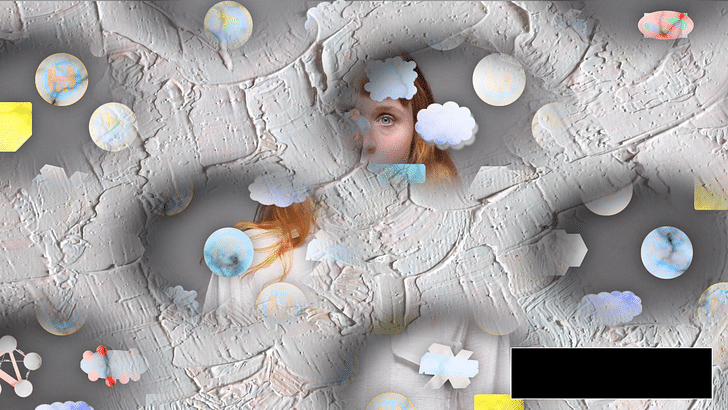
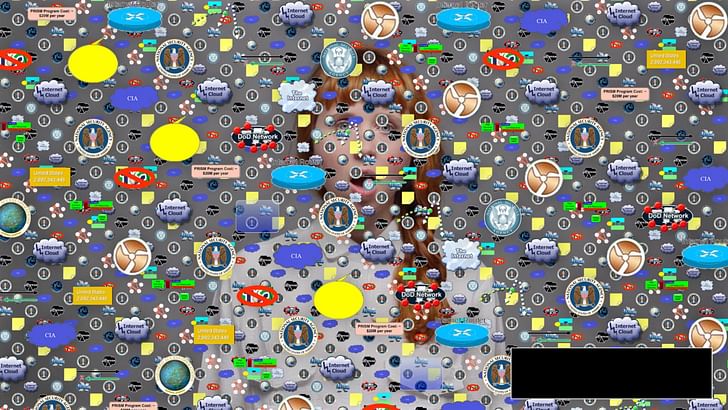
I’m really interested in the use of both animations and live action in the film. Can you speak to the use of these two different visual strategies?
The film’s use of anime was influenced by “Nyash Myash.” The live action scenes were filmed in a very slow manner with long shots and switches between wide and narrow framing. We subtitled the film in English and Korean, and the subtitles are colored yellow. For us, subtitles are really important as visuals and belong to the content of a film. The anime and live action are both fictions. Though perhaps people would initially read it as if the live action corresponds to ‘reality’, and the anime to ‘fantasy’, there is no hard separation here. Anime is used to express emotion, spatiality (the so-called “steppe of pixels” in which the story is set), but the live action functions in the same way. The “flag of digital satin” waving in the forest, for example, is live. And so is the film’s main, fictional, plot image.
Anime visuals are a bit like emoji, in that faces and characters are to some extent interchangeable and express primordial states of mind that immediately make themselves clear. Framing is extremely close so that in large areas of the drawings “nothing” happens. In the propagandistic use of anime that we discussed when talking about Natalia Poklonskaya, anime works to lift a person out of the particulars of context and translate her into visual code. The character can “leap” from reality to fiction. Then, back in actual reality, she can refer to herself and be referred to by others in slightly different terms.
You’re teaching at Strelka this year. What do you hope for the program? What do you think young architects can learn from Metahaven?
We are working on the theme of Platform Aesthetics. The idea is to use literature, poetry, cinema, architecture, art, and of course, the ideas of the students, to re-imagine platforms, whilst being aware of the standardization, scaling, and other operations that happen through them, which make them so interesting as interfacial and ideological phenomena, as polities, and as policies. There are not only architects but also designers and artists taking part in the program. We all can learn a lot from each other.

Writer and fake architect, among other feints. Principal at Adjustments Agency. Co-founder of Encyclopedia Inc. Get in touch: nicholas@archinect.com
No Comments
Block this user
Are you sure you want to block this user and hide all related comments throughout the site?
Archinect
This is your first comment on Archinect. Your comment will be visible once approved.